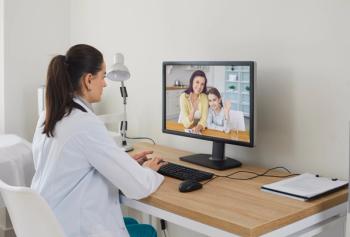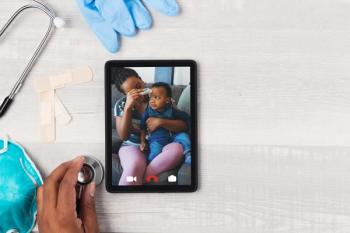
Telehealth myths: True or not true?
What's telehealth fact and what's telehealth fiction? Dr. Schuman explores common assumptions regarding telehealth.
By now you are no stranger to telehealth (TH) virtual visits and have likely decided on your TH service provider of choice. Once the COVID-19 pandemic is over, you will, no doubt, continue to provide TH services for patients. Let’s explore several common myths about TH services and see if they need busting!
Myth #1
Telemedicine is the same as telehealth!
This is reminiscent of the terminology applied to our digital medical records. At one point these were referred to as “Electronic Medical Records” (EMRs) rather than “Electronic Health care Records” (EHRs) in common use today. Strictly speaking, telemedicine refers to virtual visits between providers and patients. Telehealth includes telemedicine services, but also includes phones calls, reviewing photos and videos sent by patients, call centers, and remote monitoring of patients via mobile applications connected to glucometers, cardiac monitors, and others.
Conclusion: Myth busted!
Myth #2
The more you spend on a TH service provider, the better services you can provide patients!
In the case of TH services, the old adage “you get what you pay for” is just not the case. More expensive TH portals include virtual waiting rooms, a section within the TH application to document visits, the ability for patients to pay for visits, screen sharing, and more. These duplicate many of the features included in your EHR and patient portal. In my view you want to communicate with patients quickly and easily from both the provider and patient perspective. That’s why I will recommend Doximity’s Dialer Video as one of best TH services available today. It is free of charge, supports group visits, and “it just works”.
Conclusion: Myth busted!
Myth #3
Telehealth video visits provide health care savings for physicians, patients, and insurance companies
During the pandemic, most states have mandated that TH video visits be paid at parity with in-office visits, and many have even mandated that telephone TH visits be paid in this way as well. Telehealth saves parents money in traveling expenses, lost time from work, as well as a multitude of inconveniences (getting kids dressed, arranging a babysitter for the sibling not being seen in the office etc.). At the practice level, for virtual visits, patients do not need to be roomed, have vitals taken, and personal protection equipment isn’t needed, saving overhead expenses. Moreover, if you are proficient at TH video visits you can “see” more video visits per hour than you can in-office visits. Therefore, TH can increase practice productivity at a time when the pandemic has reduced revenue. Lastly, insurance companies will realize reduced payments, as fewer patients will need to be seen in emergency departments, and likely fewer diagnostic tests will be ordered via TH visits compared to in office visits.
Conclusion: Not a myth. True
Myth #4
You cannot do physical examinations via virtual visits!
As a consequence of the pandemic, parents have avoided bringing children to their routine well visits. This is quite understandable as venturing into the community is considered hazardous, and most parents (and pediatricians) recognize that medical offices are especially risky environments for catching illnesses. The American Academy of Pediatrics (AAP) has given their approval for virtual well visits - “For practices who have successfully implemented telehealth to provide appropriate elements of the well exam virtually, these telehealth visits should continue to be supported, followed by a timely in-person visit.” You can provide important age appropriate advice during these visits and have the parents obtain measurements (baby scales are inexpensive and can be ordered from online vendors for $20-$40). You can also do a cursory physical examination looking for rashes, orthopedic issues, examine the throat, and have the parents palpate the neck, abdomen, etc.
Conclusion: Myth busted
Myth #5
Once the pandemic is over, regulations regarding TH virtual visits will change.
Hopefully, in the not too distant future, the pandemic will be over! Realistically, it is likely to linger for months to come. Emergency mandates at the federal and state levels have facilitated the performance of TH virtual and telephone visits by medical professionals. Eventually we can expect that these mandates will be lifted, the status quo will be state policies that were in place before the COVID-19 pandemic crippled our health care system. Many states, such as my state of New Hampshire, have mandates in place to assure that insurance companies and Medicaid pay for TH virtual visits at parity with office visits. You can check the status of your state by visiting the Center for Connected Health Policy’s webpage at
Conclusion: Not a myth. True.
By the way, as of this writing, several US senators are collaborating on a bill to make current guidelines for TH care permanent – so stay tuned!
That’s it. Hope your experience providing TH services to patients is a positive one. Please send your comments and questions to me at
Newsletter
Access practical, evidence-based guidance to support better care for our youngest patients. Join our email list for the latest clinical updates.








